Innovative Strategies for Managing Escape Behaviors in Educational Settings
Introduction to Regression in Autism and ABA Therapy
Regression in children with autism spectrum disorder (ASD) poses unique challenges, especially when managing therapy interventions such as Applied Behavior Analysis (ABA). Recognizing the nature of regression, its signs, possible causes, and effective ways to measure and support progress through ABA is essential for caregivers and professionals. This article explores strategies to handle regression in children receiving ABA therapy, addressing both clinical and practical aspects to optimize outcomes.
Defining Regression in Children with Autism

What characterizes regressive autism in children?
Regressive autism is marked by the loss of skills that a child once had, especially in communication and social interaction. This decline happens after a period when the child appeared to be developing usually.
Typical age range for regression onset
Regression often begins between 15 and 30 months of age, with the most common onset around 19 months. This timing is important as it usually follows an initial phase of typical growth.
Symptoms signaling regression
Signs that a child is experiencing regression include:
- Losing language abilities previously acquired
- Withdrawing socially, showing less interest in interacting with others
- Avoiding eye contact
- Exhibiting changes in play behavior, such as less imaginative play or reduced interest in toys
Understanding these signs can help parents and caregivers seek timely evaluation and support for their child.
Prevalence and Epidemiology of Regression in Autism
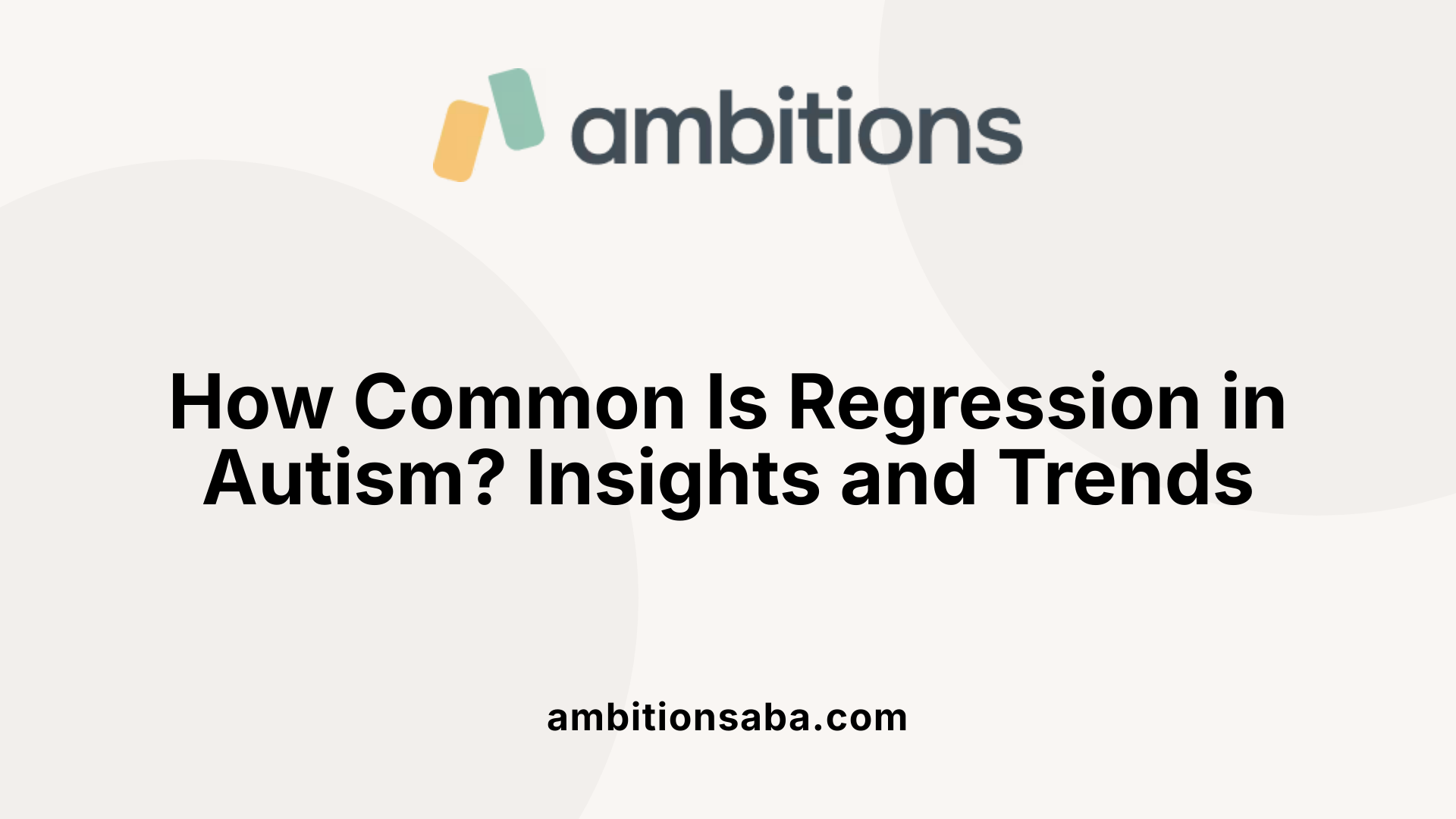
How common is regression among children with autism?
Regression in autism, also known as regressive autism, refers to the loss of previously acquired skills after a period of typical development. Studies estimate that regression occurs in about 13% to 48% of children diagnosed with autism spectrum disorder (ASD).
More recent research narrows this range, indicating that approximately 20% to 30% of ASD cases involve some form of regression. This suggests that regressive autism is a significant subtype within the broader spectrum.
Variation in prevalence estimates
The wide variation in prevalence estimates can be attributed to differences in diagnostic criteria, study populations, and methods used to identify regression. Some studies rely on parent reports, which can be subjective, while others use clinical evaluations. This diversity in approaches contributes to the range between 13% and 48%.
Despite these variations, the recognition that a substantial proportion of children with autism experience regression highlights the need for early monitoring and intervention during critical developmental periods, typically between 18 and 30 months of age.
Early Warning Signs Before Regression
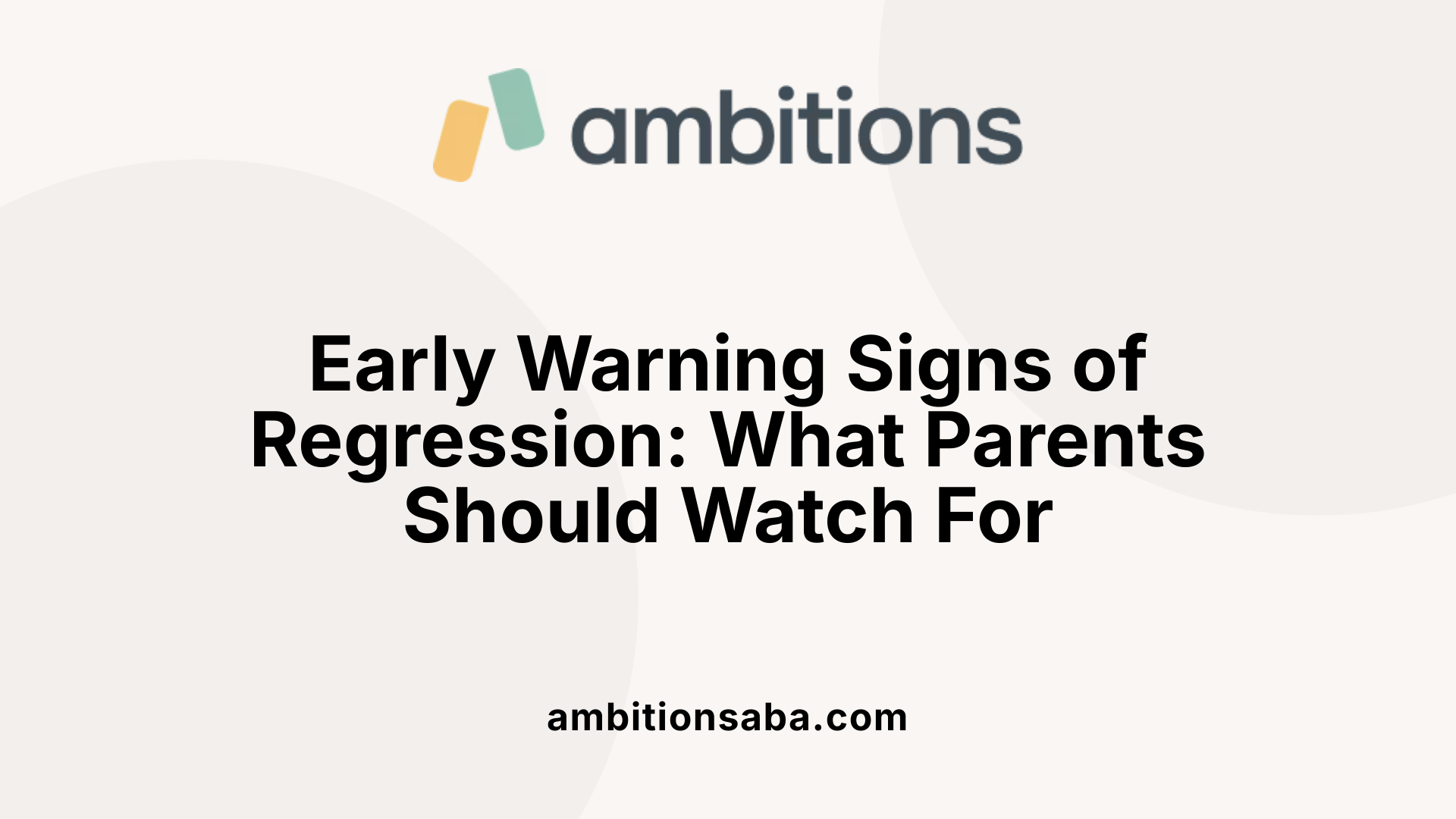
What early signs may indicate impending regression in a child?
Before the onset of regressive autism, subtle indicators often emerge that suggest a child may be at risk for losing previously acquired skills. These early signs primarily involve changes in language and social communication.
One common sign is plateauing language development, where a child's ability to develop new words or communicate effectively stagnates instead of progressing as expected. Alongside this, decreased eye contact and reduced social engagement may appear, reflecting early difficulties in social interactions.
Children might also show less interest in social play or fail to respond to social cues as they previously did. These subtle shifts in behavior can be crucial flags, prompting further monitoring and early evaluation.
Recognizing these early warning signs can enable timely intervention, potentially helping children maintain or regain lost skills and improve their developmental trajectory.
Causes of Regressive Autism: Current Understanding
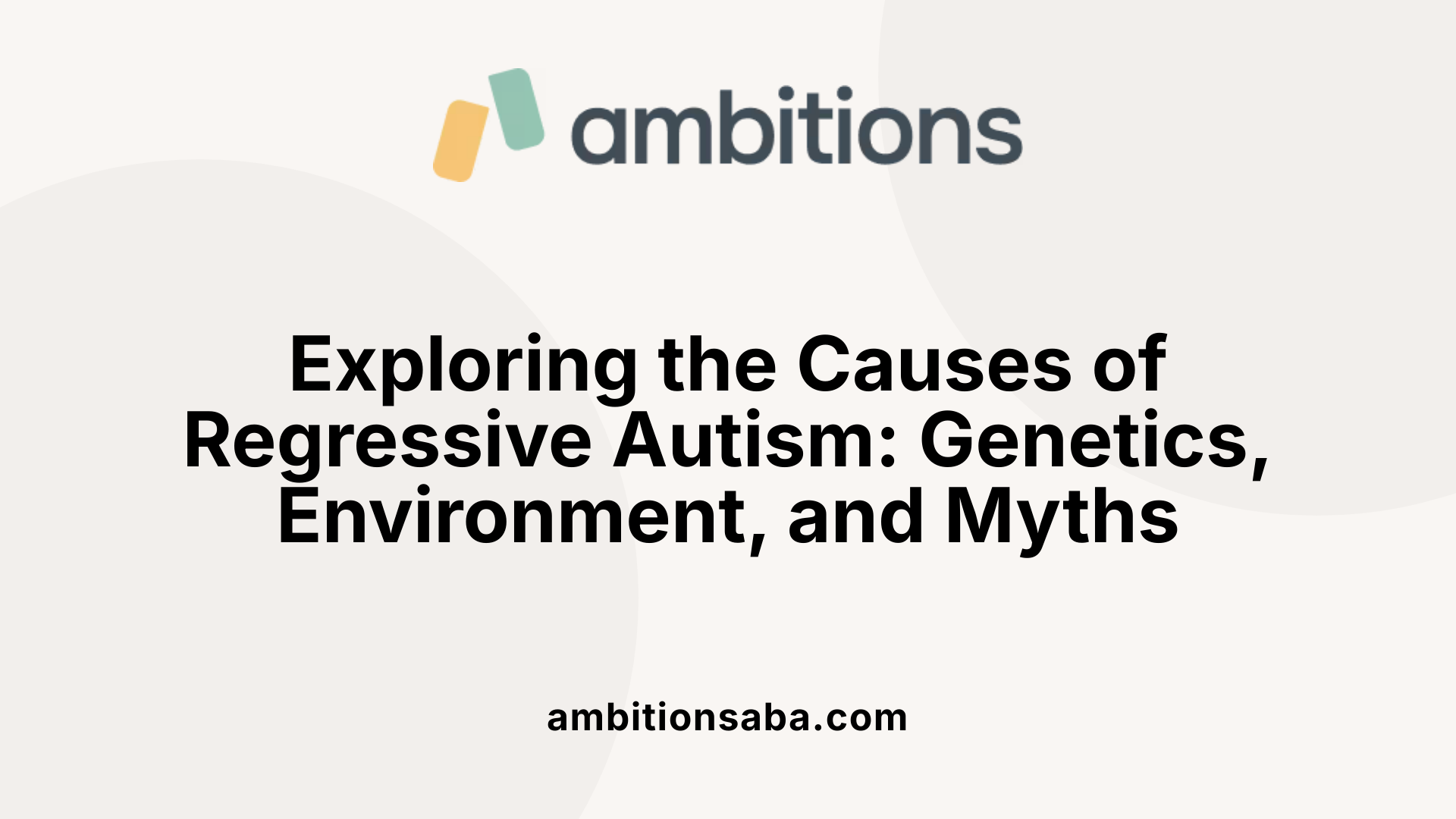
What causes regressive autism?
Regressive autism is believed to arise from a complex interaction of multiple factors rather than a single cause. Genetic predispositions play a significant role, suggesting that certain inherited vulnerabilities may increase a child's likelihood of experiencing regression.
Environmental and biological triggers are also important contributors. These can include prenatal exposures, such as complications during pregnancy or exposure to certain substances, and perinatal factors that affect the child around the time of birth. These events may interact with genetic susceptibilities to influence brain development and function.
It is essential to address common misconceptions regarding regressive autism. Extensive scientific research has consistently shown that vaccinations are not linked to autism or regressive autism. Vaccinations remain a crucial public health measure for preventing serious infectious diseases and should not be viewed as a cause of autism spectrum disorders.
Ongoing research continues to explore these factors in more detail to better understand how they contribute collectively to regressive autism. This knowledge is vital for developing prevention strategies and improving early detection and intervention.
The Role of Associated Medical Conditions in Autism Regression

Common Co-occurring Conditions
Children with regressive autism often experience several associated medical conditions that can complicate their symptoms and overall development. The most frequently observed co-occurring issues include gastrointestinal problems, sleep disorders, and anxiety. These medical challenges are common across the autism spectrum but may particularly influence the course and severity of regression.
Effects on Behavior and Therapy Progress
These associated conditions can significantly affect a child's behavior and response to therapy. For example, gastrointestinal discomfort may lead to increased irritability or withdrawal, complicating communication and social engagement efforts. Sleep disturbances can exacerbate difficulties with attention and mood regulation, reducing a child's ability to participate fully in therapy sessions. Anxiety may also present barriers to learning new skills or adapting to changes needed during intervention.
Effective treatment for regressive autism often requires addressing these medical issues alongside behavioral therapies such as Applied Behavior Analysis (ABA), speech therapy, and occupational therapy. Managing co-occurring conditions can improve a child's overall well-being and enhance the effectiveness of interventions aimed at regaining lost skills and supporting development.
Diagnosing Regression in Autism: A Multidisciplinary Approach
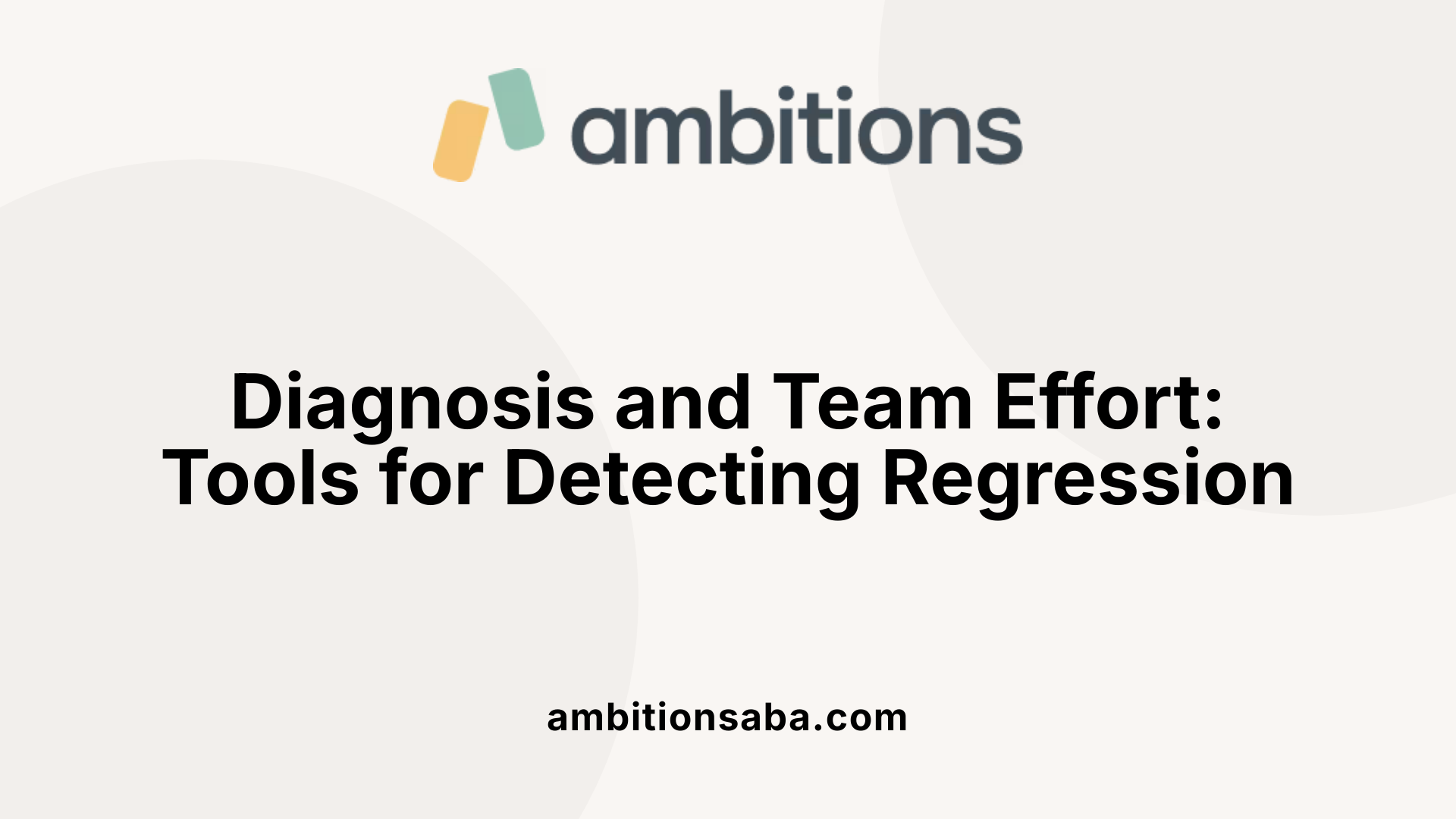
Developmental screening techniques
Early identification of regressive autism relies heavily on developmental screening. Parents and clinicians often observe subtle signs like plateauing language skills and reduced social engagement before noticeable regression occurs. Tools such as the Modified Checklist for Autism in Toddlers (M-CHAT) are commonly used for initial screening to detect autism spectrum disorder (ASD) indicators in young children.
Standardized assessment tools like ADOS and M-CHAT
Beyond screening, standardized assessments help confirm the diagnosis. The Autism Diagnostic Observation Schedule (ADOS) is a widely used, structured tool that evaluates communication, social interaction, and play behaviors characteristic of ASD. Combining these tools gives clinicians a detailed picture of a child's developmental status and the presence of any regression.
Role of pediatricians, psychologists, and therapists
Diagnosis is best achieved through a multidisciplinary team approach. Pediatricians often initiate evaluations through parent interviews and medical histories. Psychologists conduct behavioral assessments and cognitive testing. Speech-language pathologists evaluate language abilities and communication skills. Occupational therapists assess fine motor skills and sensory integration. This collaborative method ensures comprehensive assessment and individualized intervention planning for children experiencing regressive autism.
Applied Behavior Analysis (ABA) Therapy: An Overview

What is Applied Behavior Analysis (ABA) therapy and how is it used to support individuals with autism?
Applied Behavior Analysis (ABA) is an evidence-based therapy grounded in behavioral science that focuses on improving meaningful skills in individuals with autism spectrum disorder (ASD). The core principle of ABA is to increase beneficial behaviors such as communication and social interaction while decreasing behaviors that may be harmful or interfere with learning.
Definition and principles of ABA
ABA therapy applies reinforcement strategies—rewarding desired behaviors to encourage their repetition and using behavior modification to reduce undesired actions. It operates through systematic observations and data collection to tailor interventions to an individual’s unique needs.
Targeted outcomes in autism therapy
The main goals of ABA in autism include enhancing communication abilities, improving social skills, fostering independence in daily living, and addressing challenging behaviors. Studies show that ABA interventions can produce medium improvements in intellectual functioning and smaller gains in adaptive behaviors when delivered early and intensively.
Reinforcement and behavior modification
ABA uses positive reinforcement techniques, such as praise or tokens, to motivate children to adopt and maintain useful skills. Behavior modification also involves identifying triggers and consequences of behaviors to reshape them in desired directions.
Personalization and professional oversight
Programs are highly personalized, considering the child's current skills and developmental level. Certified therapists continuously monitor progress, adapting methods based on ongoing data. Interventions often include parents to support skills generalization across settings.
Overall, ABA is a cornerstone of autism therapy, designed for early childhood and delivered with high intensity over many hours per week, maximizing potential gains through individualized, evidence-driven approaches.
Qualified Professionals Delivering ABA Therapy

Who typically provides ABA therapy services and what qualifications do these professionals have?
ABA therapy is delivered by a range of specialized professionals committed to supporting children with autism spectrum disorder (ASD). The primary providers include Board Certified Behavior Analysts (BCBAs), licensed psychologists, speech-language pathologists, and trained therapy assistants.
BCBAs are certified experts who have completed rigorous education, supervised experience, and passed a comprehensive exam. They are responsible for designing treatment plans, overseeing progress, and training other staff. Their expertise ensures that ABA interventions are evidence-based and tailored to each child's needs.
Supporting roles include Registered Behavior Technicians (RBTs) and therapy assistants who work under the close supervision of BCBAs. These practitioners carry out the therapy sessions directly, implementing behavior change techniques and tracking progress.
To provide ABA therapy, professionals must adhere to specific licensing and certification standards, which vary by region but generally ensure relevant expertise in autism intervention. Compliance with insurance and regulatory requirements is also critical, further guaranteeing quality care.
This collaborative multidisciplinary approach ensures that children receive comprehensive and effective support from highly qualified teams dedicated to advancing their skills and development.
Techniques Utilized in ABA to Address Behavioral Challenges

What are the main techniques or strategies used in ABA therapy to address behavioral challenges in autism?
Applied Behavior Analysis (ABA) therapy uses several specialized techniques to help children with autism improve their behavior and skills. One of the most fundamental strategies is positive reinforcement, which encourages children to repeat desirable behaviors by rewarding them, often with praise or tangible rewards. This approach helps motivate learning and increases the likelihood of positive behaviors recurring.
Another core technique is Discrete Trial Training (DTT). DTT breaks down complex skills into small, manageable steps and teaches them one at a time. Each trial involves a specific instruction, the child’s response, and a consequence, either reinforcing the right response or correcting the mistake. This structured repetition simplifies learning new abilities.
Visual modeling is also frequently used, where children observe videos or pictures demonstrating a behavior or skill they need to acquire. This helps them understand expectations and replicate the behavior in real life.
To assist children who need extra guidance, ABA therapists employ prompting and fading. They initially offer assistance or cues to help the child perform a behavior and then gradually reduce that support over time until the child can do the task independently.
For teaching more complex behaviors made up of multiple steps, behavior chaining connects individual actions into a continuous sequence. For example, dressing oneself involves multiple steps that are taught and linked together progressively.
Finally, extinction is used to reduce undesired behaviors. This method involves withholding reinforcement for the unwanted behavior, so the behavior gradually diminishes because it no longer results in a positive outcome.
These methods are tailored to each child’s unique learning profile, promoting meaningful behavioral change in a supportive, encouraging way.
Measuring Progress and Effectiveness in ABA Therapy

Continuous Data Collection and Analysis
ABA therapy relies on systematic and ongoing data collection to measure behavioral changes in individuals with autism. Therapists observe specific behaviors, recording occurrences quantitatively during sessions to track improvements or areas needing attention. This continuous data provides a real-time picture of the child's progress.
Standardized Tools Like POP-C
To assess symptom severity and guide treatment intensity, ABA programs often incorporate standardized tools such as the Protocol for the Observation of Psychosocial Characteristics (POP-C). These tools help clinicians quantify behavior patterns and symptoms objectively, ensuring that interventions are based on measurable data.
Review and Adjustment of Intervention Plans
The gathered data is regularly reviewed by a multidisciplinary team to identify trends and evaluate whether the current intervention is effective. When progress plateaus or new challenges arise, the intervention plan can be adjusted—modifying goals, techniques, or session intensity—to better meet the child’s evolving needs.
Evidence of Improvements in Cognition and Adaptive Behaviors
Meta-analyses of ABA interventions show meaningful improvements in intellectual functioning and adaptive behaviors. For example, studies demonstrate medium effect sizes in cognitive gains (standardized mean difference SMD = 0.51) and small but significant advances in adaptive skills (SMD = 0.37). These measurable outcomes highlight ABA therapy’s ability to foster developmental gains by tracking observable behavior changes systematically.
| Measurement Aspect | Description | Purpose |
|---|---|---|
| Continuous Data Collection | Systematic observation and recording of defined behaviors during therapy sessions | Monitor progress and identify trends |
| Standardized Tools (e.g., POP-C) | Objective symptom severity measurement to inform treatment dosage and focus | Guide individualized intervention planning |
| Regular Data Review | Multidisciplinary evaluation of collected data to assess effectiveness and make necessary changes | Ensure treatment remains responsive and effective |
| Outcome Evidence | Meta-analytic findings showing improvements in cognition and adaptive behavior | Validate therapy effectiveness |
Impact of ABA Therapy on Children with Regression in Autism

How Effective Is ABA Therapy in Helping Children Regain Lost Skills?
Applied Behavior Analysis (ABA) therapy is widely used to support children with regressive autism, focusing on improving communication, social skills, and reducing problematic behaviors. Research indicates that comprehensive ABA interventions can lead to medium improvements in intellectual functioning and small gains in adaptive behaviors for children with autism spectrum disorder (ASD). These therapies typically start in early childhood, involve high-intensity sessions (20-40 hours per week), and are personalized to address multiple skill areas simultaneously.
Does a Child's Age or Initial Skill Level Affect ABA Therapy Outcomes?
Studies suggest that ABA therapy’s effectiveness may vary depending on the child’s age and skill level at intake. Younger children and those with higher initial language and adaptive abilities tend to experience more pronounced benefits. This highlights the importance of early detection and intervention in regressive autism to maximize developmental gains.
What Challenges Exist When Treating Regression Using ABA?
Despite positive outcomes in certain areas, ABA therapy has limitations. Meta-analyses have found no significant impact of ABA on language abilities, symptom severity, or parental stress when compared to control treatments. Many primary studies have methodological weaknesses, such as small sample sizes and lack of blinding, which affect the strength of conclusions. Additionally, the heterogeneity of children's presentations and the complex nature of regression complicate treatment efforts.
Overall, while ABA can support recovery of lost skills in regressive autism, its effectiveness varies, and more rigorous research is needed to fully understand its impact on all core autism symptoms and family well-being.
Intensity and Duration of ABA Interventions

How many therapy hours per week are typical for ABA?
Applied Behavior Analysis (ABA) therapies for children with autism spectrum disorder (ASD), including those with regressive autism, are generally intensive. Typical programs involve 20 to 40 hours of therapy each week. This high intensity aims to provide ample learning opportunities and reinforcement to support skill acquisition and behavior modification.
What is the recommended age for starting ABA intervention?
Early intervention is critical for children with ASD. ABA treatments typically begin around ages 3 to 4 years. Starting therapy during early childhood takes advantage of neuroplasticity, helping children regain lost skills and improve communication, social, and adaptive behaviors.
Why is early and intensive therapy important?
Early and intensive ABA therapy is essential because it addresses multiple developmental skills simultaneously and maximizes potential gains by using various behavioral methods. Intensive programs, involving many hours weekly, allow consistent practice and help generalize skills across naturalistic settings.
Research demonstrates that early intervention with higher intensity ABA can have medium effects on intellectual functioning (standardized mean difference SMD = 0.51) and smaller effects on adaptive behavior (SMD = 0.37). Moreover, children who begin therapy younger and possess higher initial language and adaptive skills may show more pronounced improvements.
While evidence shows promising outcomes, studies vary in quality and highlight the need for ongoing research to optimize therapy timing and intensity for regressive autism specifically.
Incorporating Parental Participation in ABA Programs

Benefits of parental involvement
Parental participation in Applied Behavior Analysis (ABA) therapy is essential to maximize its benefits for children with regressive autism. Engaging parents helps extend learning beyond therapy sessions, promoting consistent skill practice nestled within daily routines. Moreover, parent involvement fosters stronger child-parent bonds and supports emotional well-being, which can reinforce positive behavior changes.
Training parents for home practice
ABA programs often include training sessions where parents learn to implement techniques such as reinforcement and behavior management strategies at home. These trainings equip parents to recognize teaching opportunities in everyday environments and to apply therapy principles consistently. This ongoing practice helps bridge the gap between clinical settings and real-life situations, reinforcing the child’s newly acquired skills.
Enhancing generalization of skills
One important goal of involving parents is to facilitate generalization, where children transfer skills learned in therapy to various settings and people. Parental participation ensures children encounter diverse cues and challenges, encouraging flexibility and adaptability in communication and social behaviors. By actively incorporating ABA strategies into daily life, parents play a crucial role in helping children maintain and expand their progress.
Limitations and Challenges in ABA Research Related to Regression
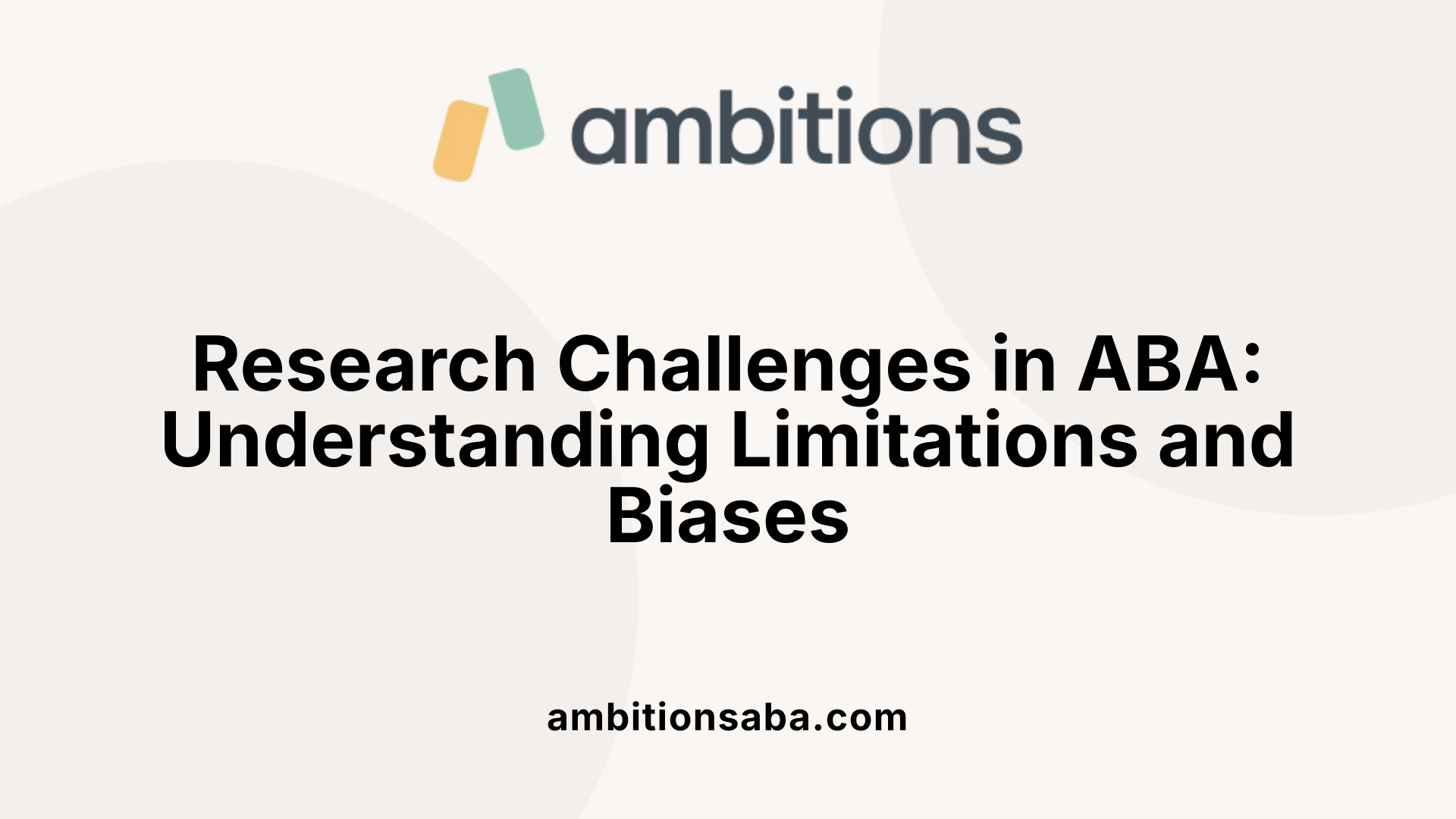
Methodological issues in studies
Many studies examining Applied Behavior Analysis (ABA) therapy for children with regressive autism suffer from significant methodological shortcomings. Common problems include small sample sizes, lack of proper randomization, unclear control conditions, and absence of blinding procedures. These flaws increase the risk of bias and make it difficult to confidently interpret the findings.
Heterogeneous findings regarding symptom severity and parental stress
Meta-analyses indicate that while ABA interventions show moderate gains in intellectual functioning and adaptive behavior, they do not significantly reduce core autism symptom severity or alleviate parental stress beyond what is achieved with control treatments. Results vary considerably across studies, likely due to differences in children's age, initial skills, therapy intensity, and parental involvement, making generalizations challenging.
Need for more rigorous research
There is a clear demand for more robust and high-quality research to accurately determine the full impact of ABA therapies on regressive autism. Future studies should utilize well-designed randomized controlled trials with larger sample sizes, standardized outcome measures, and proper control groups. Such rigor will help clarify the therapy's effectiveness across multiple domains and inform best practices for individualized interventions.
Specific Considerations for Regressive Autism in ABA Treatment Planning

Tailoring Interventions to Regression Symptoms
Children with regressive autism demonstrate lost skills in language and social interaction after a period of typical development. Therefore, in ABA treatment planning, therapists must carefully adapt interventions to focus on regaining these core communication abilities and social skills. Emphasis should be placed on restoring language competence, improving eye contact, and increasing social engagement, customizing strategies to each child's specific regression profile.
Addressing Co-occurring Medical Conditions
Many children with regressive autism also face additional medical challenges such as gastrointestinal issues, sleep disturbances, and anxiety. These conditions can influence behavior and responsiveness to therapy. ABA treatment plans should incorporate collaboration with medical professionals to monitor and manage these co-occurring problems, ensuring a holistic approach that supports better therapy outcomes.
Multi-skill Simultaneous Targeting
Effective ABA interventions for regressive autism often require simultaneously targeting multiple skills—communication, social interaction, and adaptive behaviors—within naturalistic settings. This comprehensive approach uses varied behavioral methods tailored to the child's unique needs. Involving parents in therapy sessions enhances generalization of skills and facilitates continuous progress across real-life environments.
By integrating these considerations, ABA plans can better address the complexities of regressive autism, aiming to regain lost abilities and improve overall development more effectively.
Addressing Common Associated Conditions During ABA Therapy

Gastrointestinal Issues
Children with autism spectrum disorder often experience gastrointestinal (GI) problems like constipation, diarrhea, and abdominal pain. These can contribute to discomfort and irritability, which may interfere with the child's ability to engage fully in Applied Behavior Analysis (ABA) therapy sessions. Recognizing and managing these issues is crucial to optimizing therapeutic outcomes.
Sleep Disorders
Sleep disturbances are common in children with autism, including difficulties falling asleep, night awakenings, and irregular sleep patterns. Poor sleep quality can exacerbate behavioral challenges and reduce responsiveness during interventions. Addressing sleep disorders alongside ABA therapy may help improve overall attention and learning.
Anxiety and Behavioral Impacts
Anxiety frequently co-occurs with autism and may manifest as increased irritability, avoidance behaviors, or meltdowns. These behavioral impacts can hinder progress in therapy and daily functioning. Therapeutic strategies should incorporate anxiety management techniques to support emotional regulation and participation.
Adjusting ABA to Accommodate Medical Concerns
Effective ABA therapy for children with regressive autism requires adapting sessions to accommodate co-occurring medical conditions. This may include scheduling sessions around times when GI symptoms or sleep disturbances are minimal, modifying communication approaches if anxiety is present, and involving healthcare providers in a multidisciplinary team to ensure comprehensive care. A personalized, flexible approach helps maximize benefits and ensures the child's comfort during therapy.
Naturalistic and Community-Based ABA Approaches

Use of natural settings for intervention
Naturalistic ABA approaches utilize everyday environments, such as the child's home, playground, or community spaces, to deliver therapy. This method contrasts with traditional clinic-based ABA by embedding learning opportunities in routine activities, making intervention more relevant and engaging for the child.
Promoting skill generalization
By conducting therapy in natural settings, these approaches enhance skill generalization—the ability of the child to apply learned behaviors across various situations and contexts. This is critical for sustaining communication, social interaction, and adaptive behaviors outside the therapy session.
Community integration benefits
Community-based ABA interventions not only encourage the practical use of skills but also foster social inclusion. Children with regressive autism can practice social skills with peers and adults in real-world contexts, improving their confidence and reducing social withdrawal. Such approaches also provide families with strategies to support their child's development within their daily lives.
Balancing ABA Therapy with Other Interventions for Regression
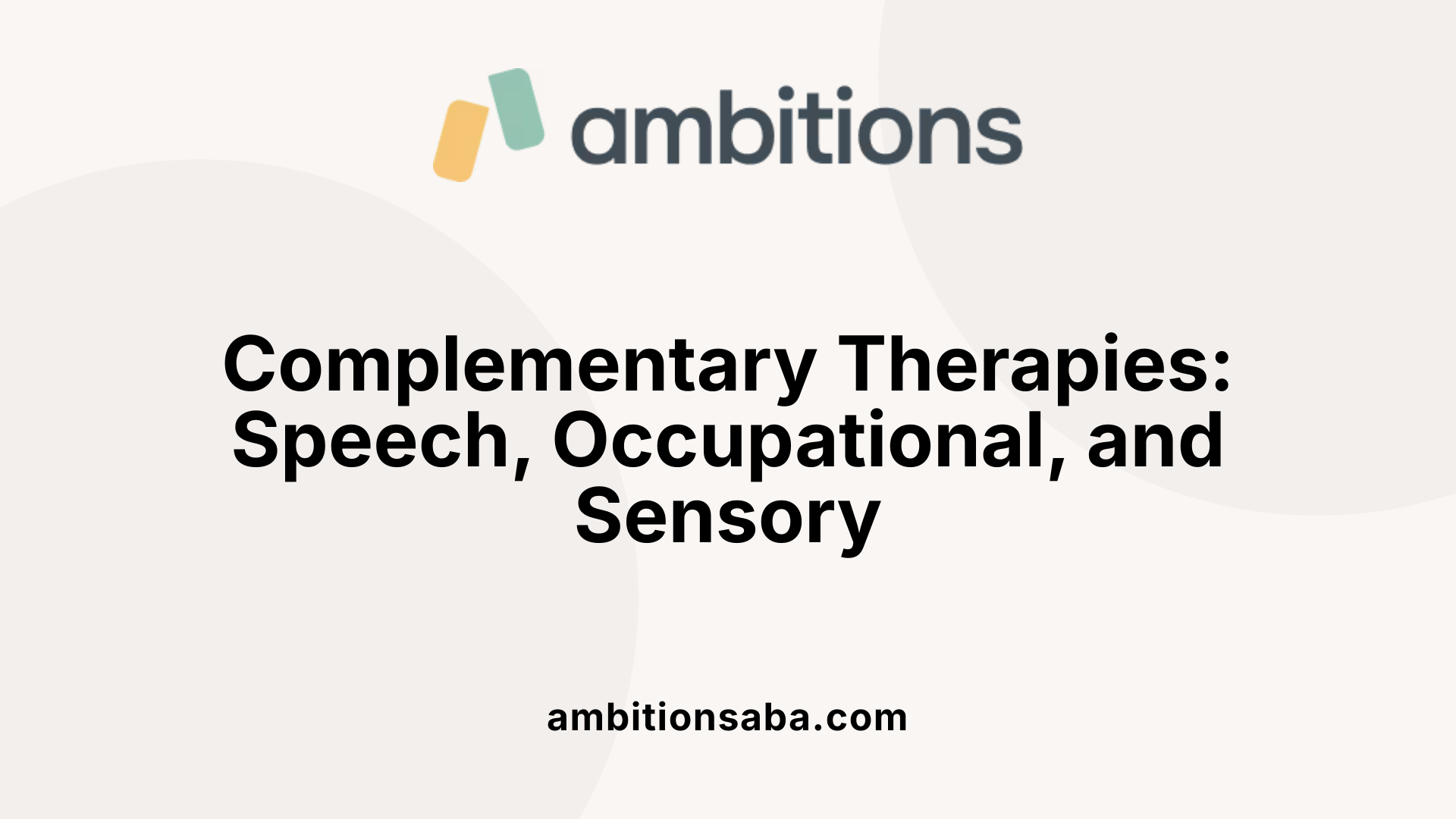
Speech and Language Therapy
Speech and language therapy is crucial for children experiencing regression, particularly to help them regain lost communication skills. These therapies focus on enhancing receptive and expressive language abilities. Speech-language pathologists use targeted exercises and interactive activities tailored to the individual needs of each child to foster verbal and nonverbal communication.
Occupational Therapy
Occupational therapy supports children in improving everyday functioning and self-care skills. For those with regressive autism, these therapies address challenges related to fine motor skills, sensory processing, and adaptive behaviors. Therapists work to build independence, improve coordination, and manage sensory sensitivities often present in regressive autism.
Sensory Integration Techniques
Sensory integration approaches aim to help children regulate and respond appropriately to sensory input. Many children with regressive autism experience sensory processing difficulties, which can worsen behaviors and social engagement. Sensory-based interventions provide structured sensory experiences that help reduce discomfort and improve attention and participation in daily activities.
Comprehensive Support Approach
A balanced intervention plan combines Applied Behavior Analysis (ABA) with speech and language therapy, occupational therapy, and sensory integration techniques. This comprehensive approach addresses multiple developmental areas simultaneously, maximizing the potential for skill recovery and growth. Early intervention, personalization to the child’s strengths and challenges, and active parental involvement are essential. Together, these therapies create a supportive environment that encourages the child’s overall development beyond what ABA alone can typically achieve.
Monitoring Regression During ABA Therapy: Signs and Strategies

Observing New or Reemerging Regression
During Applied Behavior Analysis (ABA) therapy, it is crucial to carefully observe children for any signs of new or returning regression. These signs may include loss of previously regained language skills, increased social withdrawal, reduced eye contact, or changes in play behavior. Early detection enables therapists to respond promptly and modify intervention approaches accordingly.
Adjusting Therapy to Evolving Needs
ABA therapy should be tailored continuously to match the child's current abilities and challenges. If regression occurs, therapists may increase therapy intensity or incorporate additional techniques such as sensory integration or targeted speech therapy. Personalized interventions that address multiple skill areas can better support regaining lost skills and promote new development.
Collaborative Communication Among Professionals and Caregivers
Ongoing communication between the multidisciplinary therapy team—comprising pediatricians, psychologists, speech-language pathologists, and occupational therapists—and caregivers is essential. Sharing observations and concerns about regression ensures cohesive understanding and coordinated adjustments in therapy plans. Caregiver involvement also facilitates consistent reinforcement of skills in natural settings, enhancing therapy effectiveness.
Future Directions: Improving Outcomes in ABA for Children with Regression

Research needs for stronger evidence
Despite Applied Behavior Analysis (ABA) being widely used for children with regressive autism, many studies show methodological limitations such as small sample sizes, lack of blinding, and unclear control groups. There is a strong need for more rigorous, large-scale randomized controlled trials to accurately determine ABA’s effectiveness on ASD symptoms, language abilities, and parental stress. Future research should also carefully examine how factors like treatment intensity, duration, and child characteristics influence outcomes.
Personalized and adaptive interventions
Evidence suggests that children with higher initial language and adaptive skills and those who start therapy at a younger age tend to benefit more from ABA. This highlights the importance of tailoring interventions to each child's unique profile, including cognitive level, symptom severity, and family context. Personalized approaches that integrate multiple behavioral techniques and encourage parental involvement are likely to enhance engagement and maximize developmental gains.
Integration of new technologies for assessment and therapy
Emerging technologies such as digital behavioral monitoring, virtual reality, and telehealth platforms hold promise for improving the assessment and delivery of ABA therapies. These innovations can facilitate continuous data collection in naturalistic settings, enable real-time adjustments to treatment plans, and increase therapy accessibility, especially for families in remote areas. Incorporating technology-driven tools could support more precise, adaptive interventions and improve long-term outcomes for children experiencing regression.
Conclusion: Navigating Regression with ABA Therapy Support
Handling regression in children receiving ABA therapy requires a comprehensive understanding of regressive autism, skilled application of ABA techniques, and ongoing assessment to tailor and adjust interventions. While ABA remains an evidence-based cornerstone supporting skill reacquisition and behavioral improvements, attention to co-occurring medical conditions, parental involvement, and multi-disciplinary collaboration is vital. Challenges remain in research quality and definitive conclusions on some outcomes, underscoring the need for rigorous future studies. Ultimately, empowering families and professionals with knowledge and resources will foster better developmental progress and quality of life for children experiencing regression during ABA therapy.
References
- Regressive Autism: Why It Happens and How We Can Support
- Regressive Autism: Symptoms, Causes, and Treatment
- Comprehensive ABA-based interventions in the treatment of ...
- Applied Behavior Analysis (ABA)
- Applied Behavior Analysis (ABA)
- The Controversy Around ABA
- Treatment and Intervention for Autism Spectrum Disorder
- ABA Techniques: Strategies for Behavior Analysts - GSEP Blog
- Applied Behavior Analysis (ABA)
- ABA Therapy Examples, Definition & Techniques

